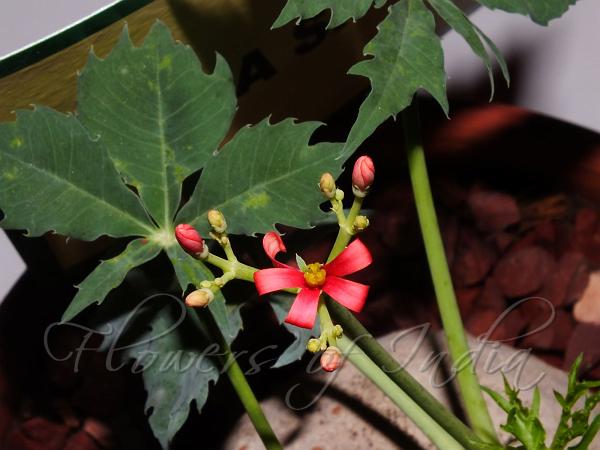|
| Berlandier's Nettlespurge |
|

|

| File size | 234642 |
| Original date | 4/5/15 12:17 PM |
| Resolution | 1600 x 1200 |
| Flash | Flash fired |
| Focal length | 20.4mm |
| Exposure time | 1/4000s |
| Aperture | 11.0 |
| Focus Distance | 0.0m |
| Metering Mode | Spot |
| Camera make | FUJIFILM |
| Camera model | FinePix HS35EXR |
| Sensor type | OneChipColorArea |
|
|
|
|
Photo: |
Botanical name: Jatropha cathartica Family: Euphorbiaceae (Castor family)
Synonyms: Adenoropium berlandieri, Jatropha berlandieri
Synonyms: Adenoropium berlandieri, Jatropha berlandieri
Berlandier's Nettlespurge is a perennial herb that
grows from an enlarged, tuberlike woody root (caudex). It is deciduous,
losing both stems and leaves, and spends the winter in a dormant state.
The large caudex is spherical, pastel-white, and up to 20 cm wide and
30 cm tall, or more. It is underground in the wild but becomes exposed
if cultivated in a container. Stems reach a length of 30 cm and have
leaf-stalks up to 17 cm long. Leaves are gray-green, palmate, very
deeply lobed five to seven times, and up to 10 cm long. The flowers are
showy, bright pink to poppy-red, and arrayed in loose clusters at the
ends of long flower-cluster-stalks. Each inflorescence bears individual
flowers up to 12 mm wide, of which 3-4 are female and 10-12 are male.
It blooms throughout the growing season from February to November, but
mainly in summer. The fruit is a green, pea-like three-lobed capsule
containing three seeds. Its native range is S. Central USA to NE
Mexico. It is cultivated elsewhere as a garden plant.
| Identification credit: Nidhan Singh | Photographed in cultivation in Delhi. |
• Is this flower misidentified? If yes,